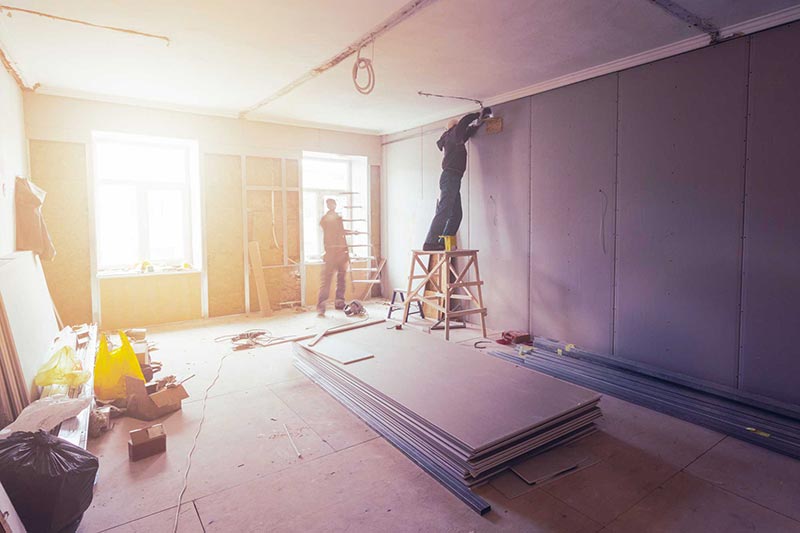
Expert Tips for Wildfire Remediation: Ensuring Thorough Odor and Soot Removal
When a property is affected by wildfire, dealing with the resulting odor and soot can be challenging. Effective remediation involves a series of steps to ensure the property is thoroughly cleaned and safe for habitation. Here, we outline the initial steps and necessary equipment for tackling wildfire odor and soot in and around your home.
Initial Steps for Remediation
- Formal Inspection:
The first step is a thorough inspection to identify the affected areas. The extent of the damage is typically related to the property’s proximity to the wildfire. Areas within 20 to 75 miles of the fire may experience significant impact depending on the wind direction and intensity of the fire. A professional inspector will use tools like a chem sponge to test for soot and other contaminants. This sponge works by magnetizing and lifting soot off surfaces without smearing it, clearly indicating the extent of contamination. - Air Quality Testing:
Depending on the severity and type of materials burned, air quality testing may be necessary. A professional environmental hygienist can conduct tests to check for heavy metals and other contaminants, providing a detailed scope of work for remediation. These tests can reveal hidden dangers that may not be visible to the naked eye, ensuring a comprehensive cleanup plan.
Safe Cleanup Practices
Handling Soot:
Cleaning soot from walls, furniture, and other surfaces is a delicate process. Soot is classified as hazardous material, so personal protective equipment (PPE) such as gloves, respirators, and protective suits are essential. Improper handling can lead to further contamination and health risks. Safety guidelines must be followed meticulously to prevent any adverse health effects.
Using Appropriate Tools:
A dry chem sponge is a highly effective tool for initial cleaning. Unlike wet cleaners, which can smear soot and make it harder to remove, the dry sponge lifts soot off surfaces cleanly. This initial cleaning step is critical for preparing the surfaces for more detailed cleaning and decontamination.
Specialized Equipment for Odor Removal
HEPA Vacuums and Air Scrubbers:
High-efficiency particulate Air (HEPA) vacuums and air scrubbers are crucial for removing particulates from the air. These devices filter out even the tiniest particles, ensuring that contaminants are not redistributed throughout the home during cleaning. HEPA vacuums are particularly effective in capturing particles as small as 0.3 microns, which includes most smoke and soot particles.
Air Purifiers and Chem Sponges:
Chem sponges remove the top layer of physical debris, while commercial-grade air purifiers with HEPA filters help trap odors and particulates, circulating clean air back into the environment. Industrial-grade air scrubbers, equipped with multiple layers of filtration, are also used to ensure that all contaminants are captured and removed.
Recommended Cleaning Agents
Choosing the right cleaning agents depends on the type of surfaces and materials in your home. Generally, a high-strength degreaser is effective for removing soot. However, ensure all physical debris is removed before using wet wipes to avoid smearing soot onto the surfaces. It’s also important to consider the material of the surfaces; different materials may require specific cleaning agents to prevent damage.
HVAC System Concerns
Impact on HVAC Systems:
Wildfire soot and odor can significantly affect HVAC systems. It is advisable to have these systems professionally cleaned and sealed to prevent recontamination. During ongoing fires, frequently check and replace air filters to mitigate debris buildup. Contaminants can easily spread through the HVAC system, exacerbating indoor air quality issues and potentially causing long-term damage to the system itself.
Proactive Measures:
In the interim, charcoal air filters can help trap odors and particulates before entering the HVAC system. Regularly monitoring and replacing these filters can significantly reduce the contamination throughout the home.
Professional Services
Benefits of Professional Remediation Services:
Hiring a professional remediation service can ensure thorough cleaning and deodorization. These experts use advanced equipment and techniques to restore your home to its pre-fire condition. They are also trained to handle hazardous materials safely, reducing the risk of health issues for you and your family.
Choosing the Right Service:
Homeowners should review their insurance policies to understand coverage for such services. When selecting a remediation service, look for certified professionals with experience in wildfire damage. Ask for references and verify their credentials to ensure you work with a reputable company.
Additional Tips for Homeowners
- Create a Plan:
Before beginning the remediation process, create a detailed plan. This plan should include a timeline, a list of necessary equipment and supplies, and regular inspections and maintenance schedules. - Monitor Air Quality:
Even after initial remediation, continue to monitor indoor air quality. Use air purifiers and regularly check air filters to maintain a healthy living environment. - Stay Informed:
Stay informed about wildfire risks in your area. Understanding the potential for future wildfires can help you prepare and take preventive measures to protect your home.
Conclusion
Wildfire odor and soot remediation require careful planning and execution. Homeowners can effectively tackle the aftermath of a wildfire by following these steps and using the appropriate equipment and cleaning agents. Professional services can provide additional support to ensure a comprehensive and safe remediation process. With the right approach, restoring your home to a safe and comfortable condition is possible, free from the lingering effects of wildfire damage.

